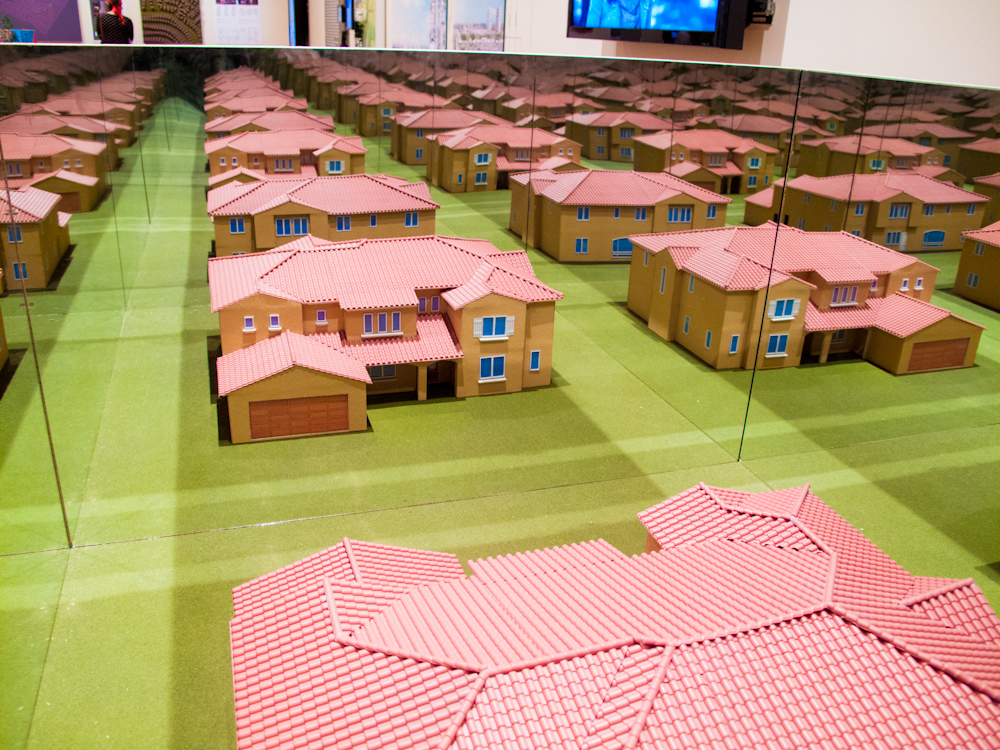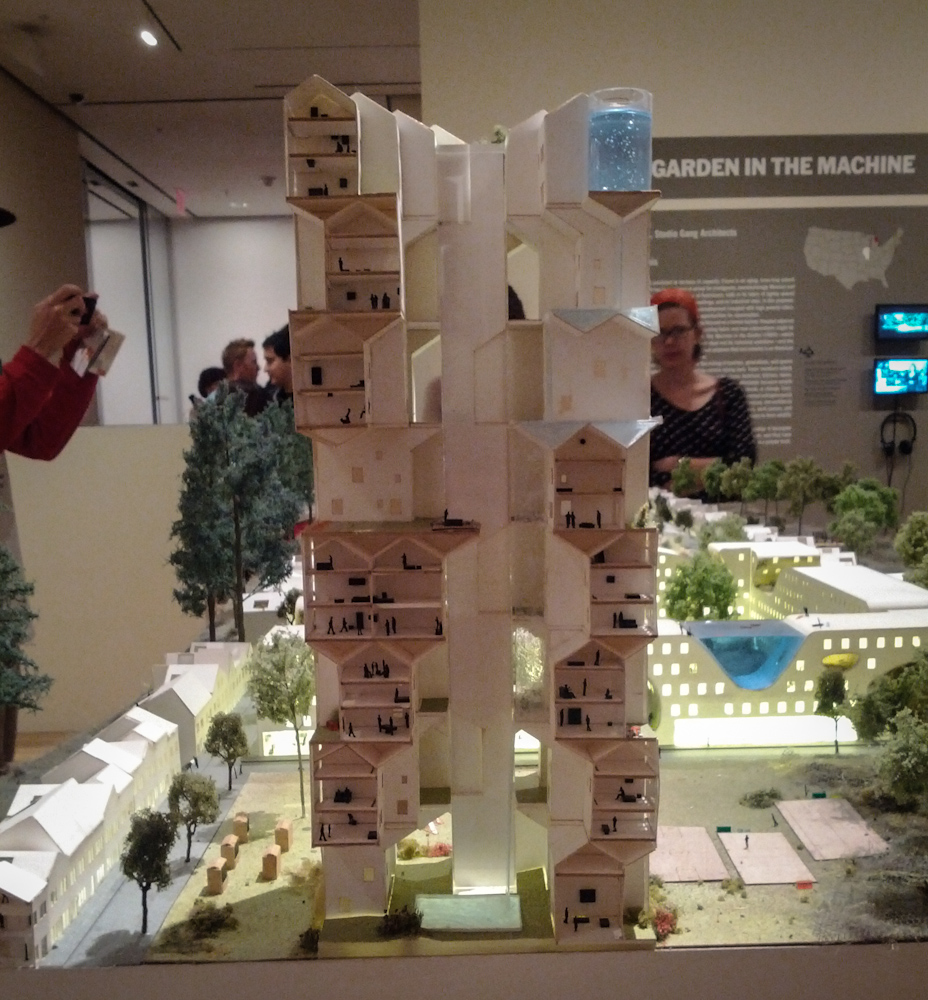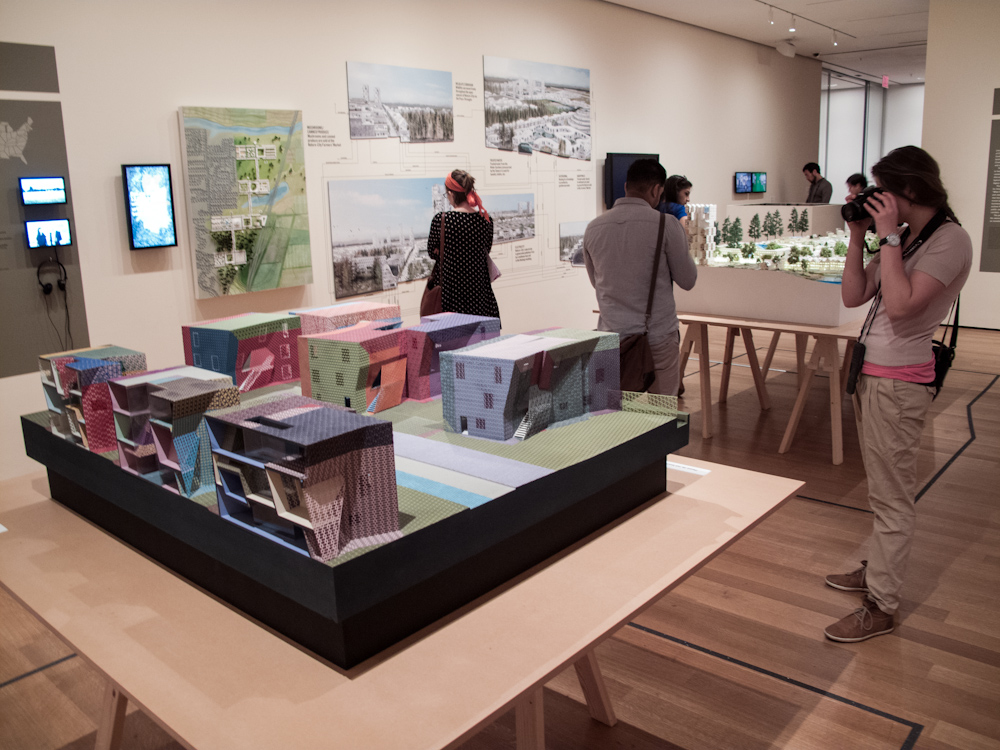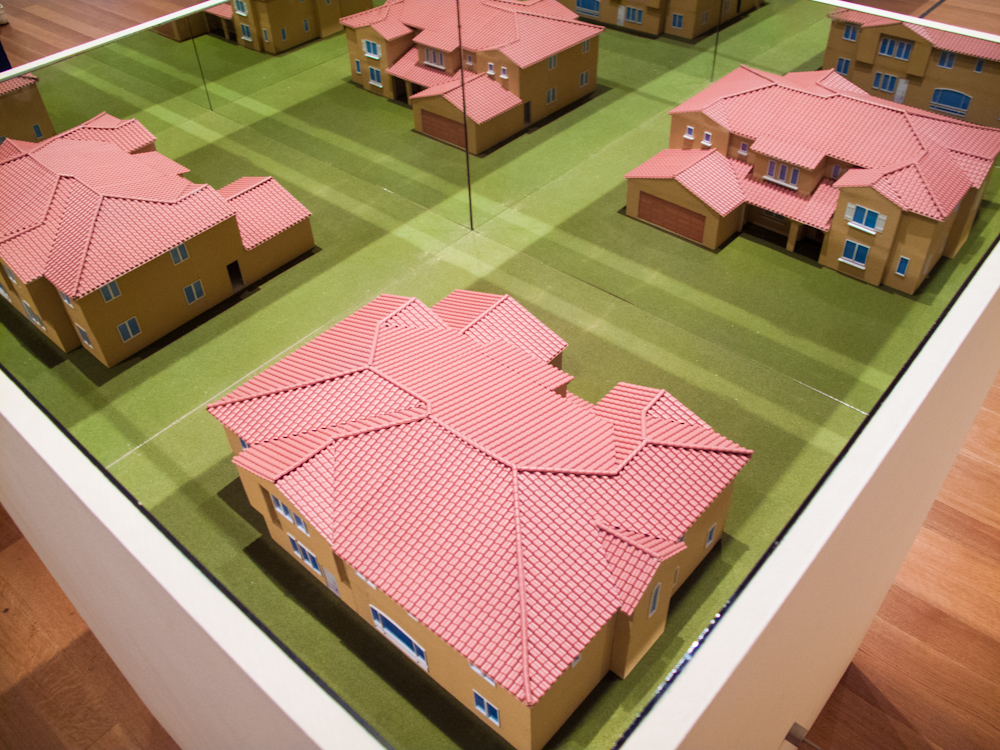Little Boxes... made of ticky-tacky
... and they're all made out of ticky-tacky, and they all look just the same.

This little ditty was the opening theme song for the television show Weeds, whose primary theme for the first three seasons was a critique of the suburban culture, lifestyle, vanities, and contradictions. Housewives and business professionals are smoking dope far more often than you might assume (but then again, this is the southern California version of the suburbs we are talking about, in the show).
But the theme song has always been the great, obvious reminder of the writers' criticism of the suburbs as somehow more safe, with less vice, and the fledgling perception that it is somehow filled with more wholesome people. Most obviously, it points out that all the "little boxes on the hillside," while they might be green, yellow, and blue, are all the same. Little cookie cutters set up for a life of Jonesing (by which I mean, keeping up with them).
 One of my favorite exhibits at the Museum of Modern Art on our recent visit was an exploration of the city, the suburb, and our relationship to these different kinds of spaces. It revolved around the Buell Hypothesis, which is brilliantly simple at its core: change the dream and you change the city.
One of my favorite exhibits at the Museum of Modern Art on our recent visit was an exploration of the city, the suburb, and our relationship to these different kinds of spaces. It revolved around the Buell Hypothesis, which is brilliantly simple at its core: change the dream and you change the city.
This deeply resonated with me; because, yes, I have taken a class on the history of the U.S. city and its development, the fallacies we have believed about them, and the many mistakes we have made in expanding them. We have had some victories too, and I think we are in an era now where we are becoming better equipped at adjusting the errs. Urban sprawl, the desire for the suburban "space"--which is, having a little yard next to your neighbor's little yard--the single-family house, the two-cars-and-garage, the desire for this "American Dream" has resulted in enormous masses of Metropolitan Statistical Areas--giant areas that now constitute the urban area of a city, and with tragically awful commutes for the people living an hour outside, as the only transportation system to accomodate the two-car dream is the interstate highway.
The Metro Statistical Area of Atlanta includes 28 counties, including the city of Athens, more than an hour east of the center. I think MSAs are fascinating beasts, and I've written about my thoughts on the cityscape before. Atlanta is one of the worst offenders of sprawl, the expansion of low-density development that saps the previously natural and open spaces that once surrounded a city, and replaces them with strip malls, big-box stores, retail centers, and many series of little rows of houses surrounding a singular winding street.
Plenty of people get really angry about sprawl, including the guy who wrote this book about it. In an article I talk about about here, the environmental benefits of reversing sprawl are explored: people in cities are using way less energy per capita to survive, period. The thing is, it is so hard to stop, to reverse, because we have not yet worked to redefine "the dream," as the Buell Hypothesis so simple stated. It was like a lightning bolt struck me. Of course. When we redefine what it means to be successful in this United States of the 21st Century, where, ahem, we are no longer the powerhouse leader of the universe and we better get over it fast, we can begin to properly analyze, repair, and improve the lives of so many living in our urban areas--as far out as they have spread. We can change our own perceptions of the kinds of spaces in which we live, work, play, thrive, towards more sustainable living in the population-seven-billion world of today. And it all, fundamentally, comes down to one uncomplicated sentence. Change the dream and you change the city.
Plus, it was just very fun to browse the theoretical models for housing systems of the future, when cities are a much larger part of the dream, and the family dwelling space for the majority of urban/suburban people might look quite different. So exciting. But I love cities. You already knew that.


